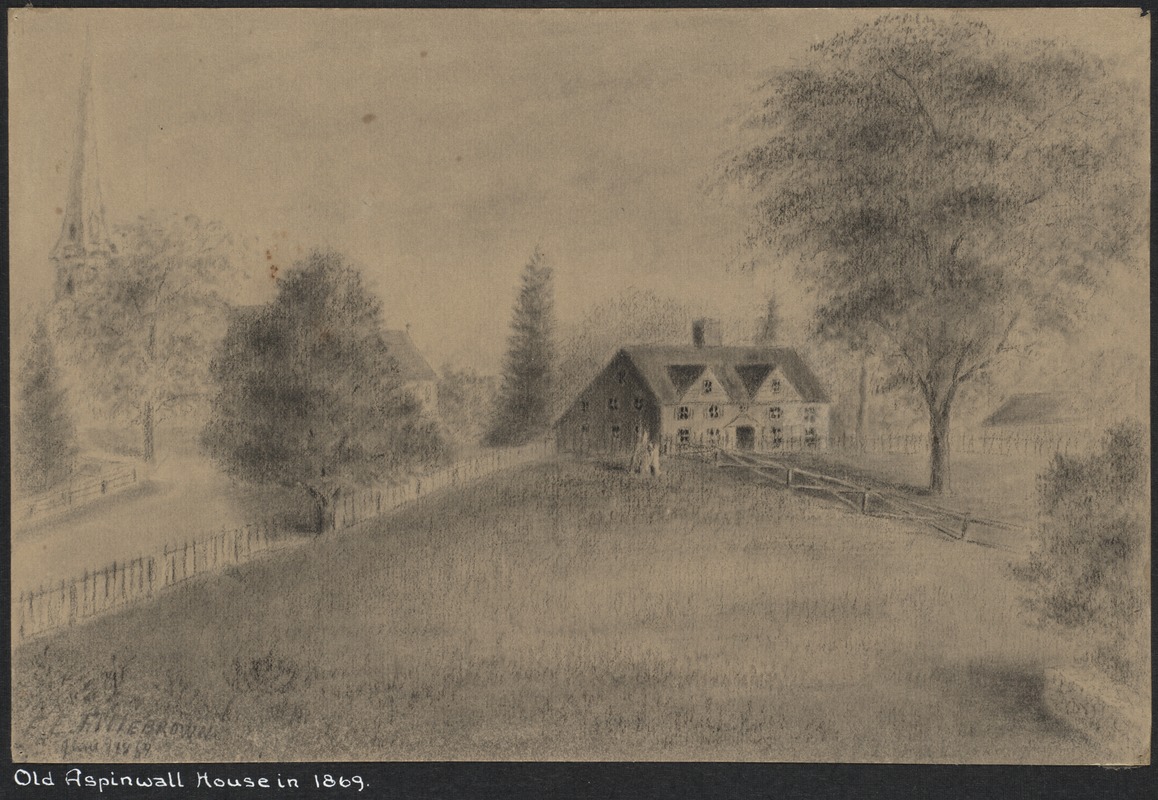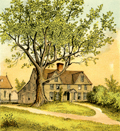 |
Memorial Day Ceremony
At the Old Burying Ground on Walnut St.
[Source: Brookline Preservation Department]
|
 |
Brookline Rifles, Bridgewater Town Green, April 15, 1863
In 1861, three young Brookline friends began forming a company of volunteers from the town to fight in the Civil War. They were Edward Wild, the young Brookline physician and ardent abolitionist; William Candler, who lived right across from Wild on Washington St.; and Charles Chandler. Daily training and drilling began and the townspeople joined in the preparations for going to war. The men also organized the “Brookline Rifles” a group of older boys, many from the high school, to prepare future recruits. The group became well-known for its proficiency in drilling and gave demonstrations throughout the state, like this one in Bridgewater. The leader of the group was sixteen-year old Moses Williams, a future town leader in Brookline and president of the State Street Trust Company.
Photographer: David T. Burrell, Bridgewater, Massachusetts
|
 |
36 Amory St., 1910
Designed in 1905 by Charles Adams Platt for Henry Howard.
[Source: Smithsonian]
|
 |
Aspinwall House, 1869
In this view the house still has its extended rear structure and the great elm tree has come down.
[Source: Digital Commonwealth]
|
 |
Original Aspinwall House & St. Paul's Church, Early 1860s
Aspinwall House is on the far right, erected circa 1660, torn down 1891. Oldest of several photos with the great elm at the rear corner of the house still standing. St. Paul St. looking north, Aspinwall Ave. follows the fence to the right.
|
 |
Aspinwall House, Aspimwall Ave., Early 1860s
The Aspinwall house was built in 1660 and was known for its giant elm tree, the Aspinwall Elm, which came down in a storm in 1863. The farm was originally bought in 1650 by Peter Aspinwall and was still in the hands of the family at the time of this photo.
Pictured in the photo, from left to right, are William Aspinwall, daughter Mary Aspinwall, and a tenant, Snow. The front of the house is faced the farm, the entrance here is in an older configuration, and the extended rear of the house has not been removed yet.
[Source: Digital Commonwealth]
|
 |
Aspinwall House, Aspinwall Ave. Fall of the Great Elm, 1863
Three generations of Aspinwall family. (L to R) Mary Aspinwall, Mrs. Colonel Aspinwall, Colonel Thomas Aspinwall, Thomas Aspinwall, Mrs. William Aspinwall, William Aspinwall (in arms of mother)
[Source: Digital Commonwealth]
|
 |
Aspinwall House, circa early 1870s
The remains of the great elm tree, toppled in 1863, remain. The rear of the house has been reduced, this may have occurred as a result of the widening of Aspinwall Ave.
[Source: Digital Commonwealth]
|
 |
Aspinwall House, circa 1880s
At the site of the present-day Ward Park on Aspinwall Ave. Great elm tree is gone.
|
 |
Aspinwall House, circa 1888
The rectory, built in 1885-86, has appeared behind St. Paul's Church
|
 |
St. Paul's Church, circa 1888
Aspinwall House is on the far right, torn down 1891. St. Paul St. looking north to the left, Aspinwall Ave. to the right.
[Source: Digital Commonwealth]
|
 |
Aspinwall House
|
 |
Aspinwall House, Aspinwall Ave.
Before 1891. Note two children peering from middle window.
|
 |
Aspinwall House, circa 1891
Fence going along the rear of the house has been removed and new one going down the backyard has appeared. Flag pole installed on top of house.
|
 |
Aspinwall House, circa 1891
|
 |
St. Pauls Episcopal Church, 1912
Aspinwall Ave. to the right
|
 |
St. Paul's Church
Aspinwall Ave. to the right, looking east; St Paul St to the left.
|
 |
St. Paul St. at Aspinwall Ave., Looking Southwest Toward Harvard St.
Circa 1915. 79 Aspinwall foreground left. Note horses getting water at the pump with an early automobile in the background.
[Source: Olmsted]
|
 |
79 Aspinwall Ave., circa 1907
Looking west toward Harvard St.
[Source: Historic New England]
|
 |
89 Aspinwall Ave., circa 1907
[Source: Historic New England]
|